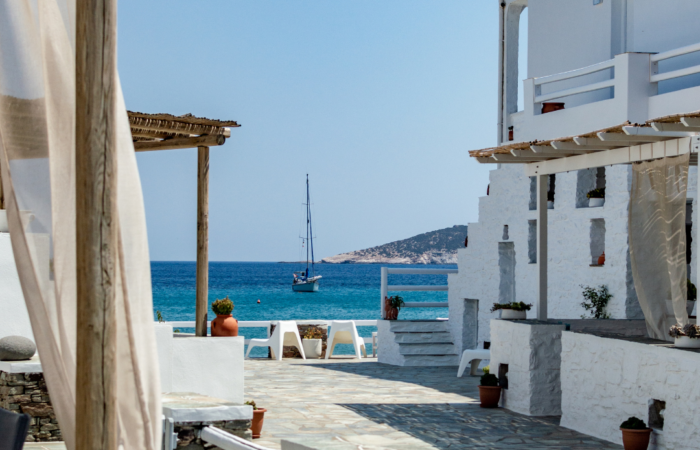The real estate market in Spain has undergone significant changes in recent years, driven by various economic, demographic, and social factors. Since the recovery from the 2008 financial crisis, the sector has experienced notable fluctuations, most recently affected by the COVID-19 pandemic and rising inflation. Below, we explore the current state of Spain’s real estate market and its key trends.
Recovery and Moderate Growth

Following the real estate recession after the global financial crisis, the Spanish market began to recover in 2014, with sustained growth in housing prices. However, this recovery has been uneven, primarily impacting large cities like Madrid, Barcelona, and high-demand coastal areas such as the Costa del Sol. In contrast, many rural areas and small towns have seen much slower recovery or, in some cases, stagnation.
In recent years, up until 2022, housing prices continued a moderate upward trend, driven by a shortage of supply in key urban areas and growing demand from both domestic and foreigners buying property in Spain. However, as we move into 2024, inflation and rising interest rates have started to cool this growth.
Effects of the COVID-19 Pandemic
The COVID-19 pandemic brought several changes to the dynamics of the real estate market. On one hand, it led to an increase in demand for homes in less densely populated areas, as many people sought more space and comfort after lockdowns. This boosted prices in rural and suburban areas that previously did not enjoy such high demand.
On the other hand, remote work has shifted the priorities of many buyers, who now place more value on living space, access to green areas, and quality of life, which has moderated the appeal of more congested urban areas. In the long term, remote work is expected to continue influencing the market, although the gradual return to offices has tempered this trend.
Foreign Investment
Spain remains one of the preferred destinations for foreign real estate investors, especially those from the UK, Germany, and Nordic countries.
Coastal areas such as the Costa Blanca, Costa del Sol, and the Balearic Islands have seen strong interest in luxury villas and second homes. The accessibility, climate, and Mediterranean lifestyle make Spain an attractive location for international buyers, especially for people looking to retire in Spain from the UK.
Additionally, the «Golden Visa,» which grants residency to those who invest over €500,000 in properties, continues to attract non-EU investors, particularly from China and Russia. However, international political tensions and global economic uncertainty could affect this
flow of investment in the near future. Foreigners buying property in Spain should be aware of the potential risks.
Rising Interest Rates and Housing Affordability
One of the key factors shaping the market in 2024 is the increase in interest rates by the European Central Bank. This has made mortgages more expensive, which has slowed the demand for home purchases, especially among first-time buyers. As financial costs rise, many potential buyers are opting to rent instead of purchasing a property, leading to increased demand in the rental market, particularly in large cities.
This rise in financing costs has been accompanied by pressure on housing affordability, especially for younger buyers. With high prices in major metropolitan areas and wages not growing at the same pace, many Spaniards are struggling to enter the property market, potentially fueling the development of alternative solutions such as co-living or government-backed affordable housing initiatives.
Future Outlook
In the short term, the Spanish real estate market is expected to continue facing challenges arising from global economic uncertainty and rising interest rates. A moderation in price growth and a potential slowdown in foreign investment could further cool the market in 2024.
However, in the long term, it remains an attractive real estate market due to its quality of life, relative stability, and continued interest from foreign buyers looking for investment properties in Spain.
Additionally, new government regulations aimed at promoting affordable housing and sustainability could reshape the market’s structure in the coming years.
Conclusion
The real estate market in Spain is in a period of transition, facing significant challenges but also opportunities for those who can adapt to new dynamics. Factors such as rising interest rates, the pandemic’s impact on demand, and government policies will continue to play a crucial role in shaping the sector’s evolution. Staying informed and understanding these trends will be essential for any investor, buyer, or seller looking to make sound decisions in the Spanish real estate
market.
Are you ready to invest in Spain’s evolving real estate market?
With changing dynamics in the housing market, from rising interest rates to government policies aimed at affordability, now is the perfect time to work with experts who understand the intricacies of Spain’s property sector. Whether you’re looking for a luxury villa on the Costa del Sol or exploring investment opportunities in Spain’s growing rental market, IPTW Consulting can provide you with the strategic advice you need.
Contact us today for personalised guidance on navigating Spain’s real estate trends. Fill out the form below, and one of our specialists will get in touch to discuss your property goals.



